Leveraging seasonality is one of key approaches to effective PR and marketing. As we near the end of November, the beginning of the holiday shopping season marked by Black Friday, we all increasingly shop online, aiming to secure the best deals. However, cybercriminals also become active, trying to exploit this seasonal demand with phishing scams, fake websites, and other fraudulent tactics.
These factors make Black Friday a strategic moment for many cybersecurity vendors to issue PR campaigns to raise awareness, educate audiences, and drive product adoption.
In this analysis, I explore how 10 leading cybersecurity vendors approached Black Friday 2024 campaigns. By examining their content, timing, and coverage, I’ve outlined lessons that PR professionals can adapt to their unique goals.
Note: This analysis offers an overview of campaigns and coverage in top outlets and does not include a full-scale media coverage audit.
What Makes a Campaign Stand Out: Examples from Leading Vendors
What Makes a Campaign Stand Out: Examples from Leading Vendors
- Malwarebytes and Trend Micro highlighted common online shopping scams, using real-life examples to educate technically savvy users and promote their free tools, such as Malwarebytes Browser Guard and Trend Micro Scamio.
- Threat Intelligence Platform provider EclecticIQ showcased its technical expertise with an in-depth analysis of a real-life phishing campaign, uncovering over 4,000 malicious domains targeting Black Friday shoppers. This campaign appealed specifically to cybersecurity experts.
- McAfee used survey data to explore consumer concerns, focusing on AI-driven scams like deepfakes. This emotionally resonant campaign positioned McAfee as a trusted resource for online protection for households.
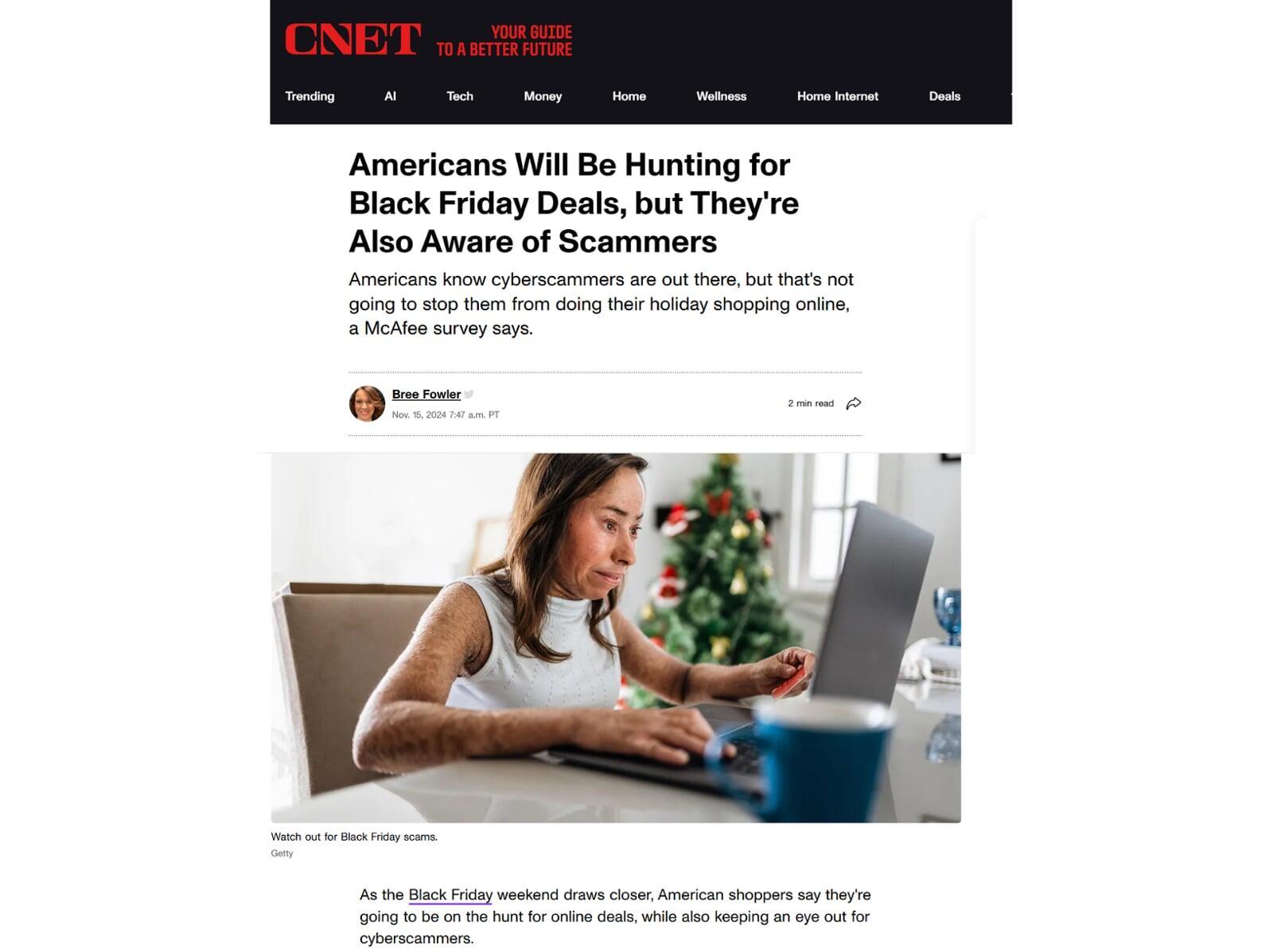
- Proofpoint emphasized the importance of DMARC adoption with research on the lack of effective email fraud prevention by the U.S. retailers and how it affects their consumers during Black Friday. By creating urgency around email security risks, the campaign targeted businesses and their need to protect consumers.
- Kaspersky analyzed dark web activity during Black Friday, revealing how scammers sell stolen data at "discounted" prices. The campaign combined this with statistics from Kaspersky Security Network (KSN), such as 198,000 Black Friday-themed spam messages detected in just two weeks.
Key Takeaways from PR Campaign Concepts
Key Takeaways from PR Campaign Concepts
Start by Asking the Right Questions:
Start by Asking the Right Questions:
- How does the event affect your audience?
- What unique challenges does it pose?
- Can you share exclusive insights or actionable advice?
Balance Broad Relevance and Niche Expertise:
Balance Broad Relevance and Niche Expertise:
- Offer a mix of universally relatable content and in-depth, industry-specific insights.
Timing Matters: Winning Strategies and Lessons Learned
Timing Matters: Winning Strategies and Lessons Learned
Early Releases (e.g., Malwarebytes and Trend Micro).
- Both vendors released campaigns on November 13, offering trending scams and actionable advice. they talked about familiar scamming strategies, by publishing early, they secured mentions in Forbes (here and here) and Security Boulevard. This example demonstrates the importance of getting ahead of the seasonal buzz.
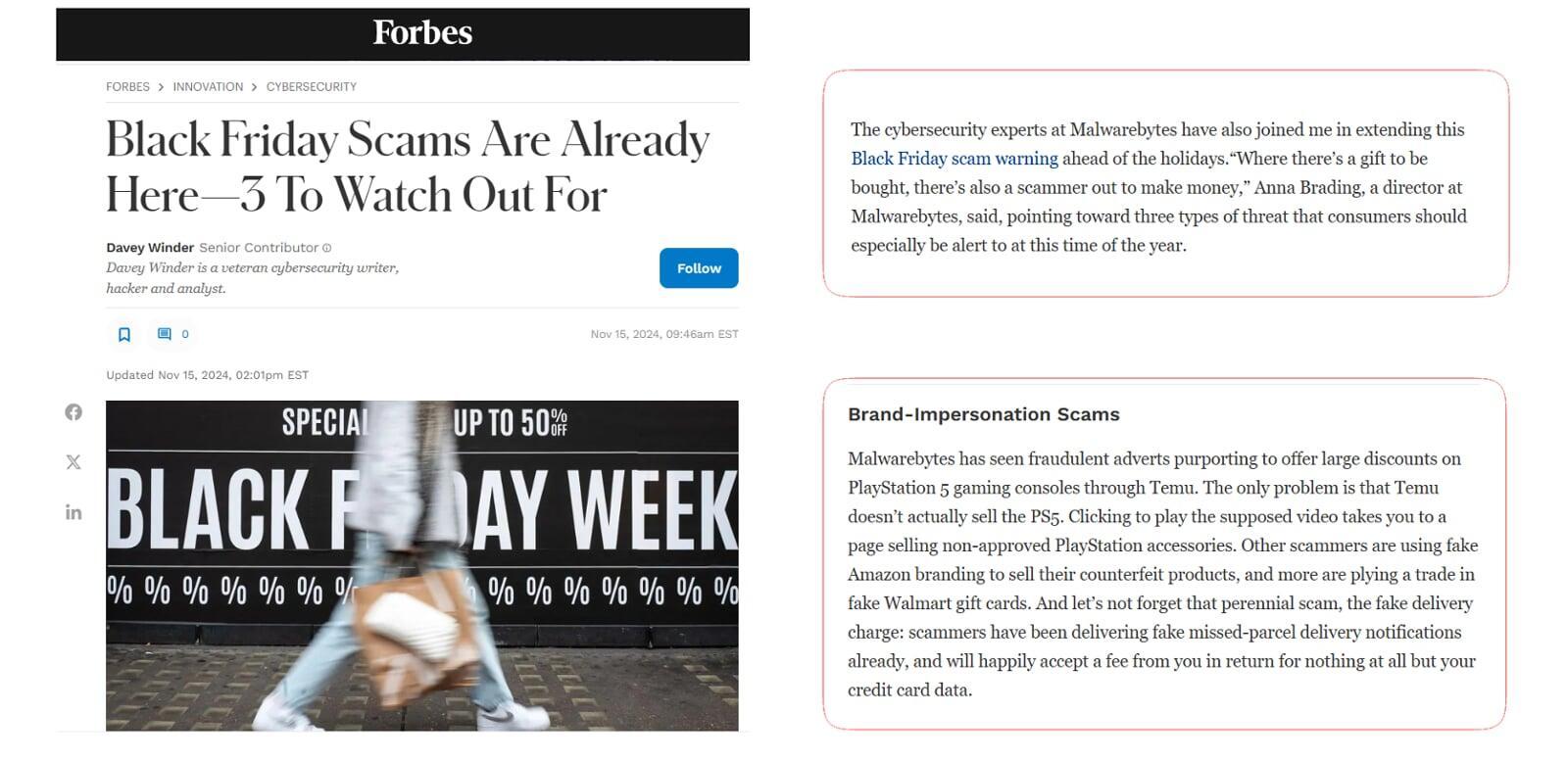
Mid-Cycle Releases (e.g., Check Point)
- Check Point’s campaign examined Black Friday-related phishing and malicious websites, offering an overview of rising threats. While well-researched, its November 19 release competed with several other strong campaigns, potentially limiting its media reach.
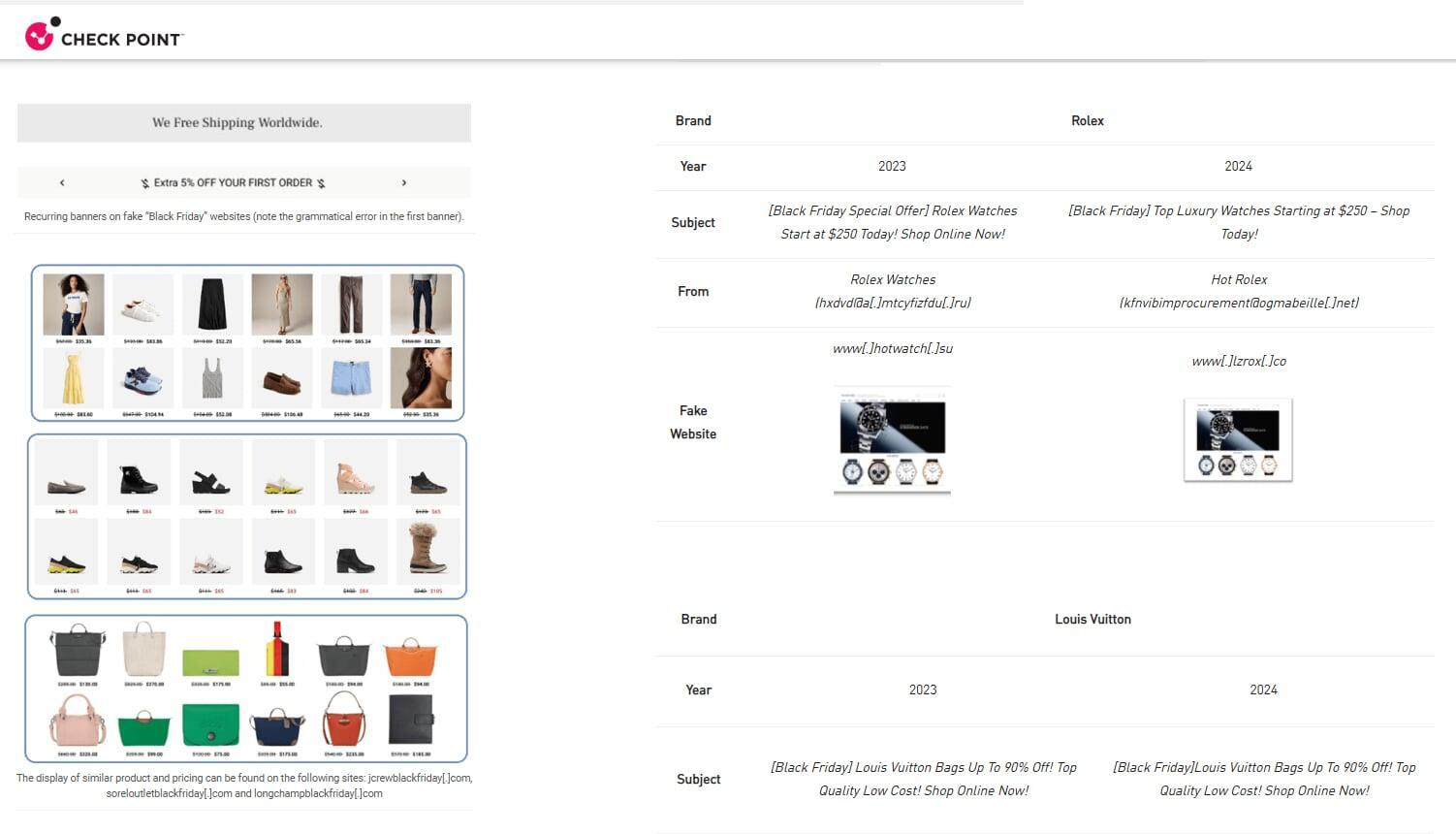
Late Releases (e.g., Bitdefender)
- Bitdefender published its campaign on November 21, when Black Friday media coverage peaked. Bitdefender’s campaign explored spam trends, breaking down scam types by demographics (e.g., scams targeting tech enthusiasts or fashion lovers). This approach along with the inclusion of real-life examples made the campaign relatable and specific, leading to mentions in Forbes and Infosecurity Magazine.
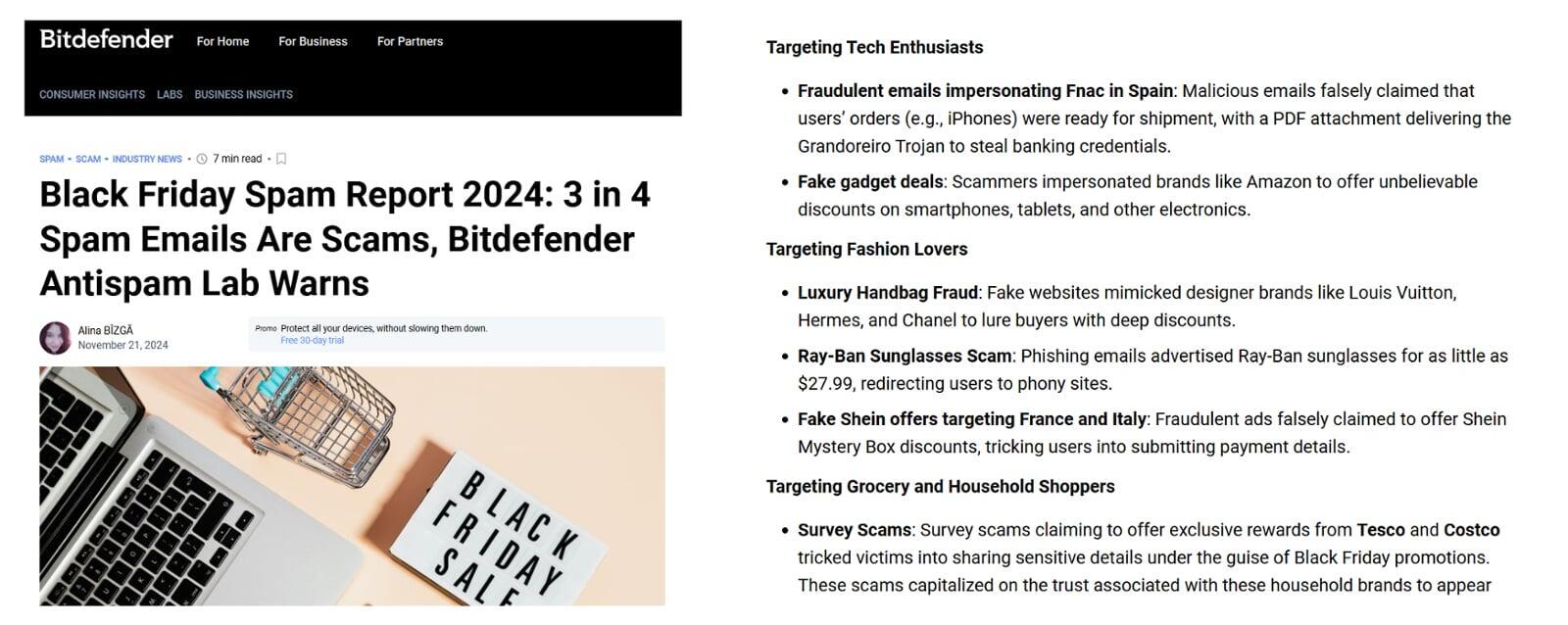
Key Takeaways
Key Takeaways
- Early Timing: Helps secure coverage for insights on relevant but commonly discussed topics before the media becomes saturated.
- Peak Timing: Works well if your insights are distinctive and timely enough to stand out.
Memorable Campaign Elements: Catchy Angles and Creative Spins
Memorable Campaign Elements: Catchy Angles and Creative Spins
Both Malwarebytes and Trend Micro released campaigns on the same day, increasing competition for attention. Of the two, Malwarebytes’ campaign stood out due to its balanced structure, catchy content, and strategic use of well-known brands like Amazon, Walmart, and PlayStation in impersonation scam examples.

Additionally, Malwarebytes included credit card skimmers, a less-discussed tactic, diversifying its narrative and making it more engaging to readers.
Notably, Forbes covered Malwarebytes’ campaign earlier than Trend Micro’s, indicating it resonated more with journalists.
Another example is Kaspersky--the vendor explored unique angles like dark web data sales and scammers offering Black Friday discounts on stolen information.
Key Takeaways
Use angles that combine familiar scenarios with fresh insights. Name recognizable brands to catch attention, and highlight lesser-known risks to showcase depth.
Google’s Repurposing Strategy: A Cost-Effective Approach
Google’s Repurposing Strategy: A Cost-Effective Approach
On November 14, Google launched a regular scams advisory, highlighting emerging fraud tactics like deepfake impersonations and crypto investment scams. The campaign leveraged existing efforts (e.g., Google’s SynthID tool for identifying AI-generated content) and repackaged them into a timely and impactful narrative.
By emphasizing its role in creating a safer online ecosystem for both users and businesses, Google’s campaign resonated with its broad audience. This approach minimized additional investment while reinforcing Google’s position as an innovator in combating online fraud.
Key Takeaway
When relevant, repurpose existing efforts to address seasonal challenges and demonstrate how your solutions adapt to emerging threats.
Leveraging a Seasonal Event Without Dedicated Research
Leveraging a Seasonal Event Without Dedicated Research
Not all vendors have unique threat data or the budget to conduct large-scale research. In such cases, offer a commentary: Share expert insights with journalists working on seasonal stories. For example, articles on Spiceworks and IT Security Guru featured expert advice ahead of Black Friday.
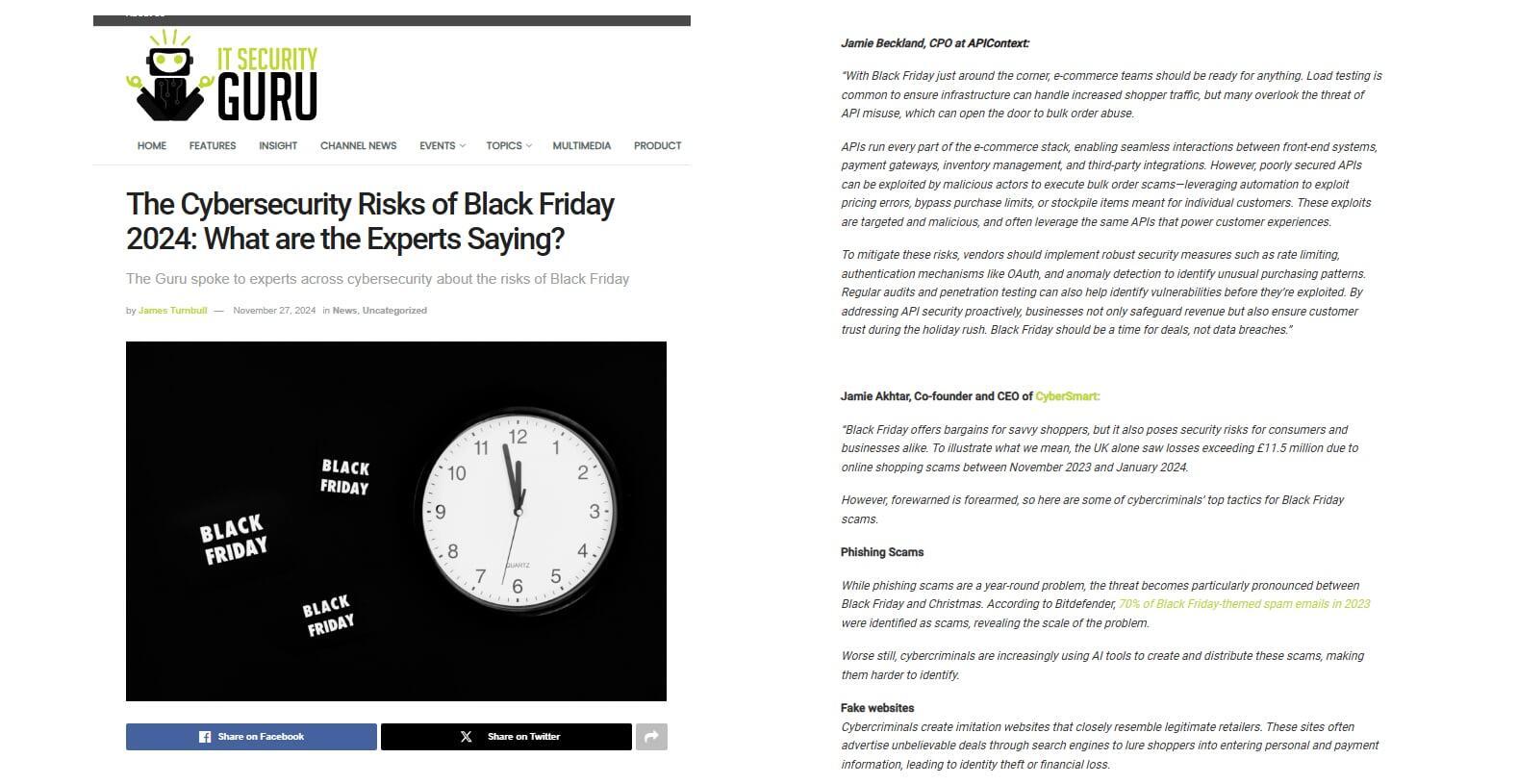
Key Takeaway
Even without extensive data or preparation time, you can position yourself as a thought leader by providing timely commentary.
Conclusion
This analysis highlights how cybersecurity vendors tailored their PR strategies to leverage Black Friday’s relevance. While some excelled with distinctive insights and well-timed releases, others missed opportunities to differentiate themselves or capitalize on seasonal buzz.
However, the design and timing of your campaign should align with your unique business goals, target audience, and available resources.
A well-timed campaign that combines fresh insights, actionable advice, and strategic positioning can help you stand out in a crowded market.
